| Umělec 2000/5 >> A Never-Ending Process An interview with Martha Colburn | Просмотр всех номеров | ||||||||||||
|
|||||||||||||
A Never-Ending Process An interview with Martha ColburnUmělec 2000/501.05.2000 Lenka Lindaurová a Jeffrey A. Buehler | q&a | en cs |
|||||||||||||
|
"Martha Colburn—Super 8 animator and self-taught filmmaker from Balitmore, Maryland—landed in Prague this year while on a European tour, which she described as “verging on a new extreme sport.” She has shown her movies in venues ranging from MoMA in New York to caves in France. She has taught animation in California and was nominated for a Rockefeller grant.
How do you feel about what’s been happening in contemporary art, especially in relation to your work in the field of animation? Well, I’ve been out of touch with it. On tour was the first time I’ve looked at magazines of contemporary art. A lot of it doesn’t come to Baltimore. I’ve always made art but I’ve never shown my art. Then I started making films, and I showed my films. So I got in touch with what was going on in underground film. I don’t think that short films and animation are connected to modern art. That’s the impression I get: That they’re not included. I’m working on a more underground level. Now video art is considered contemporary but film is rarely written about. That’s why all of these books have to be written called Film as Art. Film is always trying to assert itself as art, but I don’t think the art world necessarily welcomes it in. How many museums are equipped with screening rooms? There’s usually some kind of film museum. Do your movies tell a story or are they simply images? No, they’re not telling a story. They’re all different impressions or ideas that come up from within me. Or visions that come up that I want to create. But they don’t tell a story, for the most part, not a narrative story. But I think in a way they give an impression of my state of mind, certainly, which is a result of living where I do and having done what I have done. Could you go a little bit into what that means? Where do you live and exactly how has that influenced your work? Well, I guess I spent the first part of my life until I was eighteen on a farm in a rural area, then I moved to a complete trash ghetto. So my films have lots of animals. But I use both sources, trash and my fascination with nature. Urban violence, and rural antics. Then the sexuality part is humor. I enjoy adding sex, actually I have trouble not adding it. Because I find it to be one of the most fascinating and humorous things to play with. How did you first begin making films? Did you study film? I went to a really bad art school. I was always an artist but then I moved to Baltimore to go to art school and I really despised it and I really didn’t enjoy it and I was suffering culture shock. So when I got towards the end of my studies I went to an army surplus place where they sell old army junk and they had a pile of films, a splicer and a projector. So these prisoners are employed there and they snuck all this stuff out the back door for ten dollars. I went home and figured out how to use the splicer and cut up the old films, and that’s how I first used hand-colored films—just put them in strips and taped them up and then assembled them together and that’s how I learned film, but I had no idea of the concept of 24 frames per second. I was sitting and cutting a strip of film two feet long for two weeks not realizing it would go by in 2 seconds. It was just flabbergasting, but it’s a good way to learn. Then somebody gave me a Super 8, which doesn’t require any knowledge. You don’t have to know a light meter. It’s not intimidating. You just get a few clamp lights and I still use my father’s entomology tripod. You know, I just use a tripod and camera. It’s a self-taught process, but it’s simple. Why are you interested in animation? It just developed out of doing things, working on film. I never really saw that much animation or thought I want to be an animator. Nothing inspired me to be an animator other than the natural process of starting to animate, and then I think it grew into my own sort of monster of animation and I don’t even know if it’s a particular realm of animation; it’s just my world, my visual expression. It’s what’s necessary to convey my ideas. I couldn’t do it with actors. I don’t think the real world is that interesting compared to what I can create. So animation is perfect. You know, the real world is too dull. I would love to put on a live erotic steeple-chasing equestrian show, but I don’t have art funding to do that so I can animate it at least and have a good laugh. That’s the first draw to animation, and that’s why it’s hard to stop it. Would you like to be a professional? No. There’s enough people who can sit around and do that. Because as soon as I know how to do something I’m on to the next idea, my next thing, maybe something completely different. To be professional you have to have yourself packaged. You can’t just schizophrenically go off and do something else. You have to do this one thing. I have no interest in it. So what do you do now to make money? Painting houses. Walls. Setting up parties for rich people. Or painting really bad props and sets for rich people parties so they can feel like they’re in the Wild West when they’re in Baltimore. Really hideous. It inspires such hate that you’re really happy to go home and do your work. To be a professional animator is to be something different than to be a professional artist, because as a professional artist you’re vision is allowed to change and is not geared towards commercial media. So it’s different. I don’t mind doing these mind-numbing jobs. I would rather do jobs that have nothing to do with my art so that I have a clean slate when I go home. That’s important. Where have you shown your films? Has it mostly been in museums or alternative venues? Museums, no. I was curated in one little show in the Whitney, just a few films, and a few films in the Museum of Modern Art in New York, but to me that’s no different than a show in El Paso, in a bar. Because you inspire someone, and they both pay equally, believe it or not. It doesn’t come down to the money. It comes down to how much fun you have and who you inspire. So it’s been in big chunks, a US tour, maybe I go to film co-ops run by inspired individuals, not by the state. Or it’s in clubs or bars, small cinemas. So it’s left to alternative spaces, especially in the US compared to Europe. Is there a community of artists doing similar work in America? Meaning are there others who are collaborating on projects or supporting each other in various ways? In America is seems as if there are possessed individuals in every city. But they’re not really in a community per se. I write letters to my friend in California, I write letters to my friend in Portland, but to collaborate I would have to move there. I was forced into having an individualist approach. I think that’s the approach most people have. Because it’s such a survivalist thing there for filmmakers. Artists. You’re on your own there, pretty much. I’ve never collaborated with other filmmakers. Musicians, yes. Why is the tempo of your films so fast? The tempo is mine. The tempo of me. Do you take drugs? No. If I took drugs I would explode. But maybe it’s the friction and chaos in my every day life that gives that impression. Are all of your films short? There’s a few longer ones, yeah, but not much longer, maybe six or twelve minutes but not past that. I might be working on a longer one, but I never know how long anything is. So I have no idea. I would like to, but not a feature, don’t even ask. Is there a script or are the movies improvised? Some of it has to be spontaneous, and it comes in a lot of processes of spontaneity. Mostly because I’m creating out of collage. So I’m constantly finding collage that inspires me to create new things, in the first processes, creating the puppets or the sets or the backgrounds. And that can grow and when you’re filming that can expand to how things interact. And the actual movements, that’s all spontaneous, frame to frame, whatever comes to you then, and in the final process the editing is just a celestial thing that comes to you. You know, you just figure it out. It’s hard to talk about your own process, I think. I don’t write dissertations about it, which is why I probably don’t get grants. My process is my own wild journey of how to do it, full of anxiety. Because I don’t really feel like I have the Martha Colburn way of doing things. My next project is just all of these scattered visions, or strange ideas in my head and just to sort them out causes lots of anxiety. And when it’s done I’m on to the next thing. A neverending process. The pictures that you use all seem to come from the 1960s or 1970s and none of them are contemporary. Are you attracted to that period? Well that’s because of the hair. But some of the lure of the 1960s and 1970s 1990s the color is all washed out. It’s also one of the differences between video and film. It feels more real somehow. The printing from the 1970s looks more like film, before you even film it, it looks like film. Also the body types and poses, the eye contact, the actual way they engage people. It’s on a completely different level than the 1990s. It’s really got some unique expressions that don’t exist in today’s photography but you wouldn’t ever really know or think about that. Maybe they’re so fast and chaotic it seems ridiculous to talk like that, but I do specifically pick things out, down to the eyes where I actually paint, accentuate their pupils with a little brush with a little purple or blue or something, which by the time it gets to Super 8 and its all dirty and I edit it on the floor, and I blow it up to 16 you can’t see it at all. I’ve had people insult me for using old things: “Oh, you’re retro. What’s this retro crap?” I just don’t listen to it. The images were also much bolder and up front, so they were much more attractive to me; the advertising was also more aggressive. Are you a feminist? I don’t know enough to say. If you’re doing something really active and if that’s enough to be feminist. If you can tell me, I’ll tell you. You should spend your time working, rather than saying I am a woman. And if you play it up in America, if you make woman-based work you can get more advantages. Money. Shows. But I don’t have interest in playing that angle. I use more female bodies because they’re used more, to sell things or in advertising, there are more women who are presenting a more engaging character than men. That’s all. "
01.05.2000
Рекомендуемые статьи
|
|||||||||||||
|
04.02.2020 10:17
Letošní 50. ročník Art Basel přilákal celkem 93 000 návštěvníků a sběratelů z 80 zemí světa. 290 prémiových galerií představilo umělecká díla od počátku 20. století až po současnost. Hlavní sektor přehlídky, tradičně v prvním patře výstavního prostoru, představil 232 předních galerií z celého světa nabízející umění nejvyšší kvality. Veletrh ukázal vzestupný trend prodeje prostřednictvím galerií jak soukromým sbírkám, tak i institucím. Kromě hlavního veletrhu stály za návštěvu i ty přidružené: Volta, Liste a Photo Basel, k tomu doprovodné programy a výstavy v místních institucích, které kvalitou daleko přesahují hranice města tj. Kunsthalle Basel, Kunstmuseum, Tinguely muzeum nebo Fondation Beyeler.
|







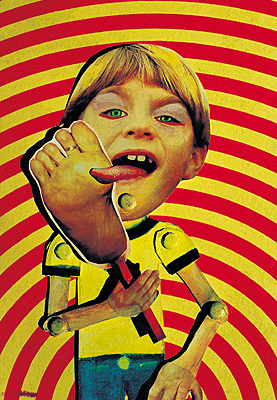
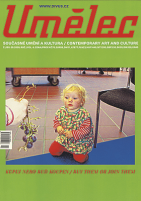















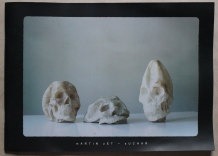




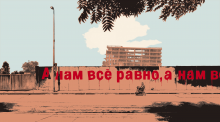
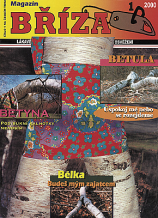
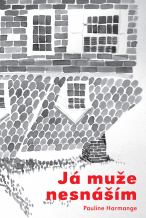
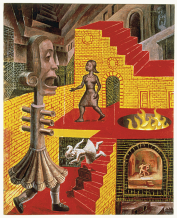


 We Are Rising National Gallery For You! Go to Kyjov by Krásná Lípa no.37.
We Are Rising National Gallery For You! Go to Kyjov by Krásná Lípa no.37.
Комментарии
Статья не была прокомментированаДобавить новый комментарий